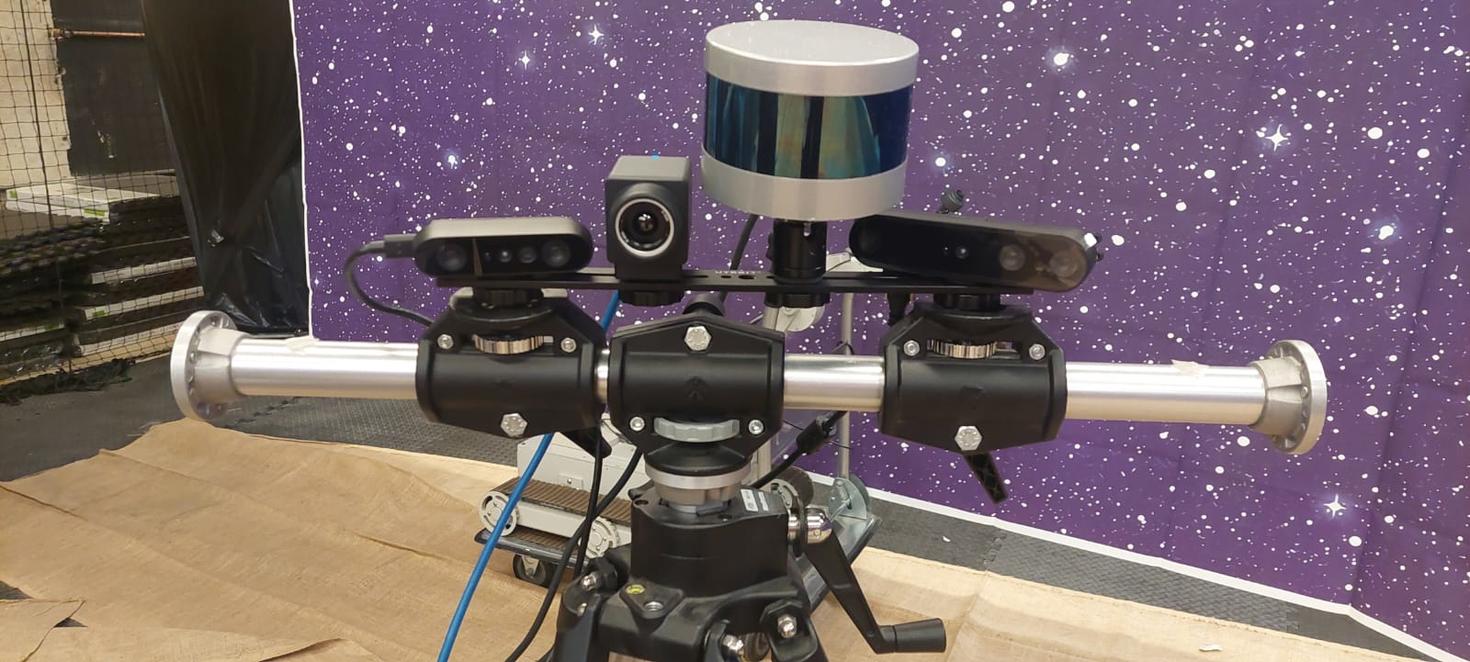Ali Massoud likely didn’t expect to walk into a rocky moonscape after partnering with a pair of uOttawa researchers.
But a mock lunar environment – along with a host of other benefits – is exactly what a uOttawa engineering research team, led by professors Pierre Payeur and Robert Laganière, delivered for MDA Space, where Massoud works as a system architect lead.
“One of the challenges of working with space applications is that there are no available datasets from the moon,” explains Massoud, who works out of MDA Space’s office in Kanata. Prior missions to the lunar surface lacked both the capacity and mission duration to collect the data needed to create these datasets.
Massoud says MDA Space’s sensors division in Kanata just isn’t large enough to host such a complex mock environment. But that was just one of many benefits stemming from MDA Space’s multi-year research collaboration with uOttawa.
And it was all made possible by uOttawa’s Kanata North campus, located in the Kanata North tech park with a mission to facilitate connections between uOttawa and local industrial partners to help de-risk and push forward cutting-edge research projects.
Empowering out-of-this-world exploratory research efficiently
The research team of engineering students led by Payeur and Laganière constructed the lifelike lunar environment – including hills, rocks, and other hazards – and supplemented it with simulators to test various environmental perception methodologies involving multiple optical sensors such as cameras and laser scanners.
Such a lifelike testing environment was crucial, says Massoud, given the lack of real-world data and challenges around navigating lunar terrain such as obstacles, craters, and unpredictable ambient light conditions.
He says the two professors’ expertise in sensing, computer vision, machine learning, video and image processing, and autonomous systems was crucial for the project and a big draw for the company.
“This project resulted in new methodologies, and there’s a lot of potential that these methods will be adopted and improve the performance of some of our products,” explains Massoud, who helped manage the project between MDA Space and uOttawa.
Methodologies developed under the project could one day be used on lunar rovers navigating and operating the rough terrain of the moon.
The research team included around 10 graduate and postdoctoral research students helping accelerate the project.
The benefits of industrial-academic collaboration with uOttawa
Payeur, a professor with uOttawa’s Faculty of Engineering, says MDA Space will benefit from a range of methodologies developed under the project – from software testing tools to a compact object recognition model, to prototyping around object detection.
Academia can apply its expertise and facilitate out-of-the-box research approaches to industry-relevant challenges – like the moon lab – while industry can leverage highly skilled masters and doctoral trainees and state-of-the-art infrastructure to conduct exploratory research at far less risk.
It’s something he says is good for everyone involved: The university, professors, students (who may one day end up working at the company), and industry.
“These partnerships are a win-win both for academia and industry,” he explains, because they often lead to new intellectual property for the company including patents, while researchers like Payeur and Laganière can publish journal or conference papers in the project’s aftermath.
Students, meanwhile, get a unique opportunity to contribute beyond a classroom setting. “The student researchers were excellent,” Massoud says, adding that he was impressed with uOttawa’s flexibility in extending the project another six months in order to fully complete the project.
“It’s a tremendous opportunity for students to get exposed to real applications and problems,” Laganière says, “because they go way beyond theoretical academic considerations they learn in class.”
Why partnering with uOttawa can help push innovation forward
Laganière says the project illustrates the importance of uOttawa’s Kanata North campus, whose main mission is to facilitate academic partnerships with companies like MDA Space to accelerate the speed of (and hopefully later commercialize) cutting-edge research.
“It shows that there’s a huge opportunity for collaboration between companies in Kanata North and the main campus,” he explains, adding that such research projects come at affordable rates and that companies can also leverage government funding to reduce the cost even further.
“We connect the research with real problems from industry – not only do we help companies develop and explore, but we also bring that knowledge back to the classroom,” he says. “And that’s motivating for students.”
On the industry side, Payeur says it’s “an efficient way for companies to investigate and to explore new solutions they will not necessarily develop in house – maybe they don’t have the staff, they don’t want to invest too much into it, or they don’t have the resources.”
“I usually say that companies often ask for the moon – and in this case, that’s what we tried to deliver.”
